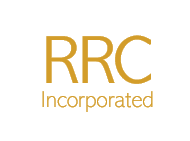GOVERNANCE: Decision-making that is aligned, efficient, and transparent
|
Symptoms of Ineffective Decision-making Process:
• Decisions don’t hold – there is push-back, second-guessing or decisions are ignored • Duplicative decision-making – different entities address the same decisions causing confusion (a key source of low morale) • Decision-making gaps – issues continually fall through the cracks, never getting the proper consideration • Decision trumping – lack of trust and conflict between programs, departments, and with needed partners/stakeholders Under-performing Governance can be fixed!RRC's governance practice specializes in assessment and redesign, to ensure that clients are gaining top value from this mission-critical area. RRC's Governance Development Model is a proven methodology that supports leadership in advancing their ability to evaluate and revitalize the decision-making process.
RRC utilizes cutting-edge decision-support software that provides powerful insight in complex decision environments. No more spreadsheets, no more black-box, no more parsing based on "what we did last year" or political whim.
|
Governance is the mechanism by which decision-making occurs, with decisions its product. Ideally, decisions should flow like water. Good governance then is like water pipes, or an irrigation system, or a watershed of rivers, streams and cascading waterfalls, all designed to deliver clean, abundant water.
Optimizing governance so that decision flow is predictable, responsive to change, and drives effective action is a critical to success. Well-engineered governance creates optimal decision-making, which leads to desired results. |


